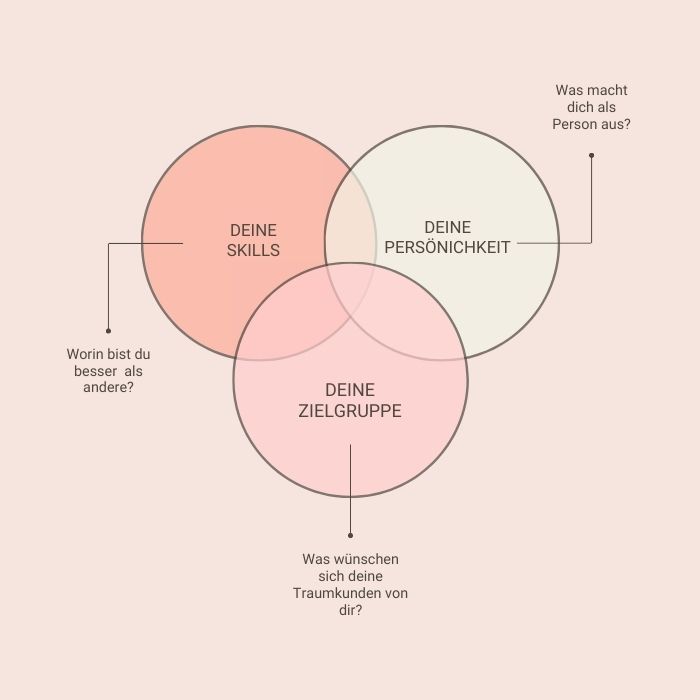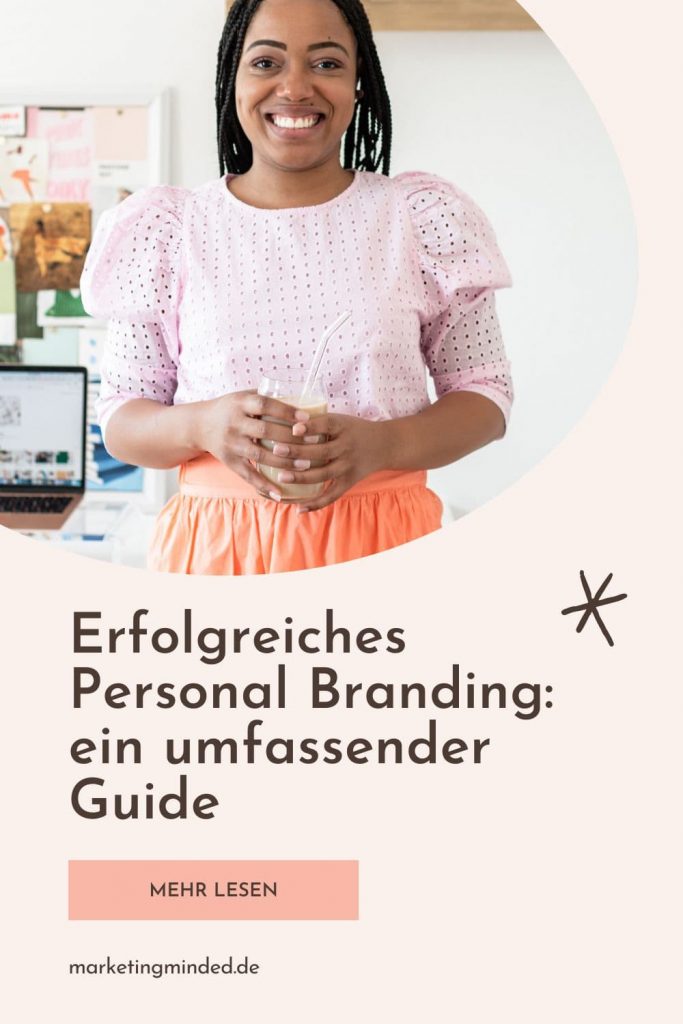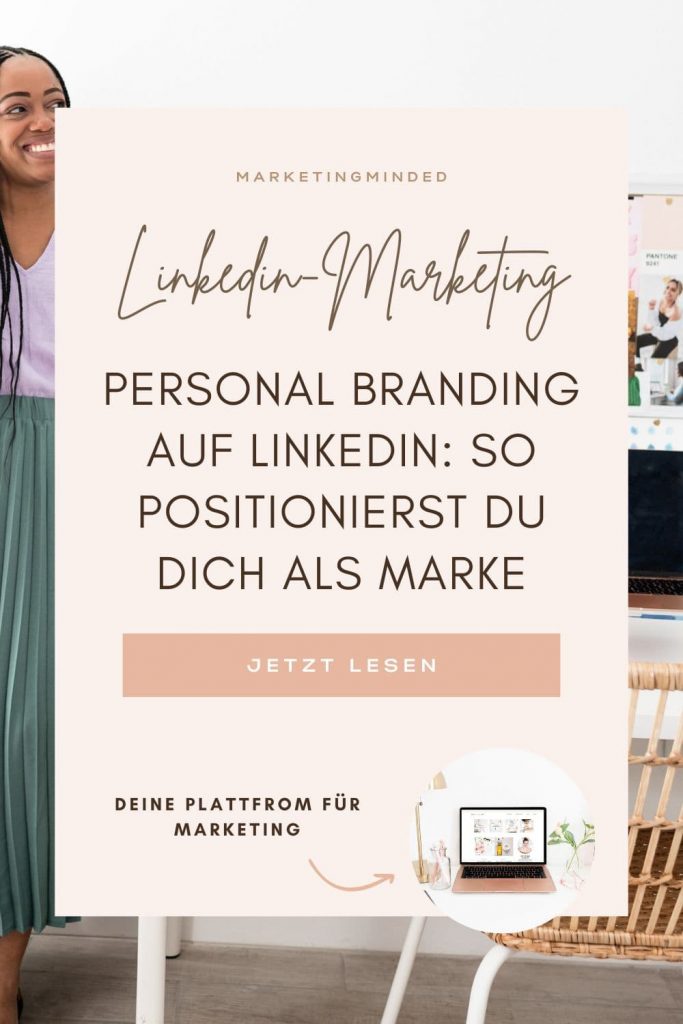
LinkedIn is like a digital trade fair happening every day. Just like at a trade fair, how potential clients and prospects perceive you on LinkedIn is crucial. The image you create in their minds determines whether and how they want to engage with you. If you come across as uninteresting and distant, they won’t want to connect with you. This is where your personal brand comes into play. A personal brand on LinkedIn not only boosts your expert status but also builds trust in you and your expertise, ultimately being key to your success on LinkedIn.
What is a Personal Brand?
(Personal) branding means actively shaping how your target audience sees and perceives you.
You see: personal branding is no coincidence but a conscious and strategic process aimed at influencing how you appear to your audience.
You have a very specific image of yourself in your mind. You know your skills, what you’re good at, and what matters to you. Building a personal brand or branding in general means transferring this self-image — your internal perspective — onto others. The goal is for your target audience to perceive you for exactly the topics, traits, and values you want to be known for. Ideally, your self-perception and the perception of others should match perfectly with strong personal branding.
Why Do You Need a Personal Brand?
A well-thought-out personal brand gives your audience clarity. You show them exactly what you stand for and what they can expect from you. By clearly communicating your expertise and what drives you on LinkedIn, you make yourself as a brand and person tangible and relatable to your audience. You create a level of trust even before you’ve had direct contact with a prospect because they already feel like they know and understand you. Your brand also helps you stand out from other brands and companies on LinkedIn because your personal brand is unique — just like you.
Do You Need a Personal Brand on LinkedIn?
I’m often asked if you absolutely need a personal brand to start LinkedIn marketing. My answer: You already are a brand. You are you. You’re already interacting with others, which means you already actively exist, and people can see and experience you. They associate you with certain traits and have an image of you in their mind. Think of your best friend — you immediately think of several characteristics and qualities you connect with her, right? That’s branding. And if the qualities you think of are the ones your friend wants to be associated with, that’s pretty good branding.
So, it’s not about whether you need personal branding on LinkedIn — you automatically build a personal brand just by existing. It’s about consciously and strategically managing this brand so your network sees exactly the image you want to convey.
You Are Your Brand
From this, it’s clear: your personal brand is deeply connected to you as a person. That’s what makes it “personal” and authentic. Customers want to achieve something with your products or services, solve problems, or fulfill needs. It’s important to understand that your offer is usually completely interchangeable for your customers. Whether they buy your product or your competitor’s to reach their goal doesn’t really matter to them.
What makes the difference is you.
As a personal brand, you as a person are the unique selling point that differentiates and separates you from your competition. Your personality ensures customers want to work with you, people want to network with you, and even media want to write about you.
What Makes Up a Personal Brand?

Your personal brand is shaped by the value you provide (your skills and offerings), your uniqueness (you as a person and your unique selling proposition), and your market environment. It is the intersection of your skills, personality, and target audience.
By now, it should be clear: personal branding is more than a business photoshoot or designing posts in your brand colors. Personal branding is a strategy to position yourself in the market.
Key elements crucial for a successful personal brand include:
- Trust
- Authority
- Your values
- Your skills
These are exactly the core elements your personal brand should convey. A well-built brand creates trust within your target group and positions you as a strong authority in your field. That means people searching for your topic know you are an expert and can help with their issues. It also communicates your values and skills — because in the end, customers buy from the person they feel best about. People they like and whose skills, abilities, and approach to solving problems best match their needs and wishes.
To achieve this, as mentioned above, it’s vital to have a deep understanding of yourself, your market environment, and your target audience.
This Might Still Sound Abstract — But It’s Not. The questions and tips below help you clarify your internal perspective and develop a strategy to project this self-image externally.
How to Build a Personal Brand on LinkedIn
To build a personal brand on LinkedIn, you must be clear about the image you want to create in the minds of your target audience and how you want to be publicly perceived.
To successfully build a personal brand on LinkedIn, you need to understand what defines you as an individual. Who are you as a person? How do you want others to experience and perceive you? And what of this do you want to share on LinkedIn? What are you really good at? What topics and causes ignite your passion? What drives and motivates you? How can you help your target audience, and what value can you offer?
The better you know yourself and understand which values and traits are important to you as a person and how these relate to your offer, the better you can position yourself on LinkedIn. It’s about uniting your private and professional “self” in a way that feels right for you so you can consciously project this self-image — how you see yourself as a person and brand — outwardly.
You also need to be aware of your market environment. Who are your competitors? What do they do differently, better, or worse? How do they reach your shared target audience, and what messages are they sending? What is currently happening in the market? Are your skills and experience still in demand? Are there competencies or expertise you don’t (yet) offer? Do you need to upskill or focus more on a specific area? Are there innovations in the market? Does your offer still meet customer needs and the competitive situation?
Your customers will choose you if they can trust you and believe your offer is the one true solution for them. To achieve this, you must not only know how you want to appear as a brand and what similar providers do to differentiate themselves but also know and understand your target audience in detail.
What drives your target audience? What are their interests? What challenges are they facing? What needs, hopes, and wishes arise from these? What fears and concerns? Does my offer match these challenges? What concrete benefits and added value do I provide? Does the way I communicate my offer speak to my dream customers? Am I able to understand my audience and communicate effectively with them? What feedback do I get from my target group?
The better you know your audience, the more relevant you become to them. Having in-depth knowledge about your target audience lets you respond precisely to their needs, create valuable content, understand their problems, and offer solutions. This knowledge also helps you “speak their language” — the better you know them, the more you give them the feeling of being understood and build trust.
All the answers to these questions form the foundation of your brand. These are the things you stand for and want to be seen for. From this, you develop your individual brand image. You then consistently convey this image in everything you do. That means your tone, appearance, and content align with the image you want to project.
To succeed on LinkedIn, ask yourself not only how you want to be seen but also HOW to best convey this image. Here your personal brand strongly intersects with your content strategy. If you want to be seen as a leader in your industry, posting the same content as everyone else won’t help — you’ll just be seen as a follower. If you’re a financial advisor for families, maybe you want to show on LinkedIn that you have already become financially independent. If your audience craves luxury, you might illustrate this by talking about family trips on a private jet. However, if most of your audience defines “financial independence” as being able to spontaneously visit an amusement park, talking about private jets might alienate them and you won’t be speaking on their level.
For building a personal brand, it’s therefore important to define what you want to be known for and how to best achieve this image.
Save now on Pinterest for later!





